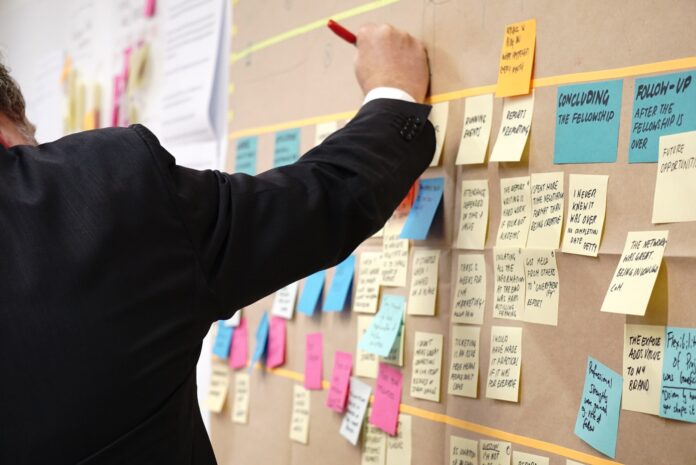
Various modern forms of communication attract a lot of users’ attention, but in a business environment, good old email is still inviolable – it all starts with it. How do you set things up in a business so that email works flawlessly? There is a way, but you should keep a few things in mind. Therefore, read our 5 management tips to keep your email inbox organized.
E-mail: Basics Of Modern Communication

The use of the Internet has greatly changed our daily lives – and one of the big changes refers to the way we exchange mail. For years now, we do it through the email accounts we have. That’s why the mail is the base of modern communication. During one month, you will receive many different emails – from business, private emails, accounts, electronic magazines, various notifications from social networks, promotions, and other news.
E-mail is a fast, efficient, and easy way to exchange messages, and in those years and back, it has been the standard in business communication. Billions of users around the world use email in their daily communication. Precisely because of this mass and the need for better organization of your messages, we will try to point out some important items in the organization of your email account and mail.
Email Organization Tools

No matter which email program you use, you should be well acquainted with its basic features. By this we mean filtering, organizing into folders, transferring messages to the archive, etc. Almost all email readers have these capabilities, so let them be your basis. Filters can help you move messages to the appropriate folders before reading, or to highlight the sender of the message and draw attention to a particular email.
Archiving emails is something that few people think about, and it’s a very good and easy way to get old messages, which you no longer need in everyday communication, out of your inbox. Most programs offer you the archive of messages so that you can access them later if the need arises. It is best to archive messages depending on the project completed – or at least at the end of each calendar year.
Tips To Keep Your Email Inbox Organized
No matter what you do, you must have found yourself in a situation where your inbox is overcrowded. You have probably spent hours of your precious time cleaning emails – why? A few management tips on how you can tame your email communication will surely help you.
1. Synchronize your devices

A desktop computer, a laptop, and of course – a cell phone should be matched. Why? Because you use all of them to access your email. The good thing is that you can set them all to be in sync with – so what you read on your laptop will be marked as read even while you are sitting at your desktop computer. But you should also consider centralizing your email accounts. Namely, if you have a desktop and laptop computer, and you have enabled your mobile phone to work with e-mail – you likely have more than one email account.
Do you want to set a server, username, and password for each gadget for each account?
Suggestion: Forward all incoming messages to one account automatically, and then use filters to sort them. After that, just sync that “central” account with your gadgets. After all, all the messages come to you – so there is no need to have so many inboxes.
2. Reply Your Email Immediately
You received an email with a question-answer immediately and archive the original. With that, you have solved one email and you can go further through the inbox, and if you have yet to get an answer – mark the message as a must reply or some similar mark.
3. Keep The Inbox Empty

Read and processed messages should be transferred from the inbox to the archive or deleted if they are irrelevant to you (spam, password reminder, etc.). In addition to having a better insight into what is in your inbox in the future – you will also get that feeling of relief when you process the last mail and see a clean inbox. You can do this even easier by using a program like Clean.email. This and similar programs will get rid of unwanted mail, spam, newsletters you don’t need – and can unsubscribe you from channels and promotional messages you don’t need anymore.
4. Get Rid Of The Junk Source
Unsubscribe from all the newsletters that don’t interest you. Why get a newsletter from someone whose software you tried 5 years ago and haven’t used it since? Are you interested in what’s new on a website you haven’t visited since last winter? Take some time and unsubscribe from all those lists. The same goes for social media. Why get 50 emails a day about how someone commented on your status or a photo on Facebook – when the same 50 notifications will greet you there anyway.
Do you need to know who follows you on Twitter? No, you don’t. Therefore, start using some Twitter app that will show you all of it. Much better than a crowded inbox.
5. Learn To Use Filters

Whether you use a web or desktop mail client, most of them have message filtering capabilities. Study them and take advantage of their opportunities. Set a time of day to check your emails. If now and then notification of a new message stops working, it will take you a few minutes to restart.
Conclusion
Electronic messages or e-mail have become an indispensable part of the business. However, often their amount burdens our inbox and causes headaches during the working day. This is best known to those who have to struggle with several hundred messages a day, among which there are unwanted, but also those that are important. To prevent email from becoming an unnecessary source of stress, find some tools that will help you organize your emails more easily and successfully, making it easier to work with them.











